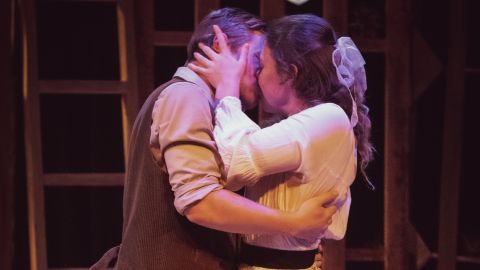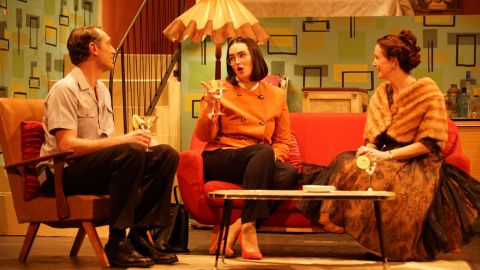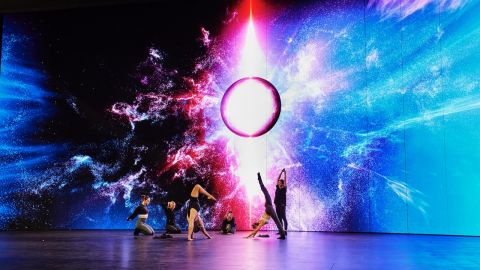Directors’ Diary: The Hunchback of Notre Dame Musical
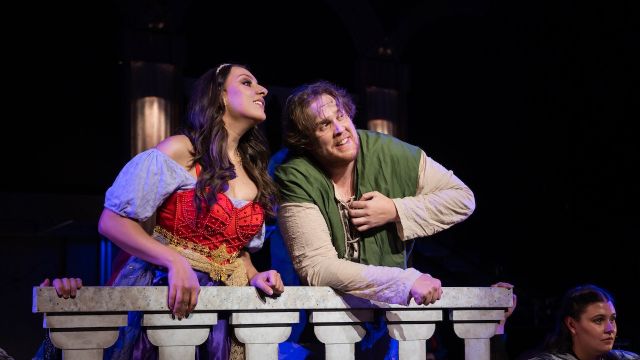
How do you stage a musical which has Quasimodo swinging down from Notre Dame? The Blackout Theatre Company rose to challenge to stage the NSW Premiere of The Hunchback of Notre Dame Musical, a production described by Stage Whispers reviewer Nicole Smith as “Five star entertainment”, daring her readers to “see just how damn good community theatre can be”.
Directors Ciewern Newell and Luke Quinn recall their journey to the stage.
The first part was getting the “Yes”.
“I have been applying for five years straight and never heard back. Six months after another application was sent, we got an email saying - approved. Then there was this feeling of being overcome with ecstatic and looming fear - can we pull this off,” says Luke Quinn.
One emergency meeting later, the committee agreed to bump the next round of shows which were locked in, in favour of Hunchback.
Immediately the focus turned to the design. Hunchback is a staple around the amateur scene in the northern hemisphere, but elsewhere it has rarely been seen live. A daunting challenge was how to fit the facade of Notre Dame into the Pioneer Theatre with its 4.5m roof.
Long-time committee member John Hanna birthed what became the design. A two tier set with the famous cathedral arches framing a 10 metre 4K LED screen with just enough space below to fit a choir.
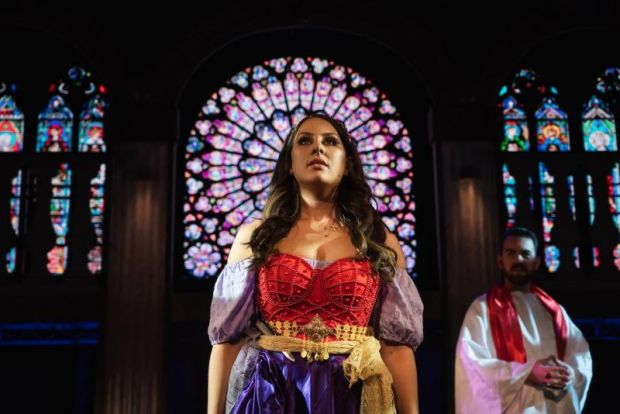
“When Luke and I saw the set, it was instant love - fusing technology and the grandeur of Notre Dame, allowing the scenes to come to life and transition from one part of Paris to another,” says Cierwen Newell.
The rehearsal materials had arrived, and it was even more overwhelming. The 129-page production handbook which Disney prescribes is an astounding resource. It gives absolute detail on every reference, every source material, every character, every required prop, special effect and more.
The script is not so prescriptive and requires the director to assign lines to the ensemble, which is an arduous task.
We started simply by giving the ensemble lines to the core congregants, hoping to distribute them fairly, although this meant needing double the number of mics.
The show demands a large cast with classical vocal skills and the ability to shape a scene with their presence and storytelling. We split the large ensemble into three factions: congregants, gypsies and choir. This allowed the three factions to hone their strengths without compromising their role.
The congregants are the storytellers of the scenes, the gypsies are the life and energy on the stage, and the choir is the cornerstone of the Alan Menken and Stephen Schwartz’s score. This did provide its challenges with integrating the cast as a whole unit; we were determined to make this cast a family.
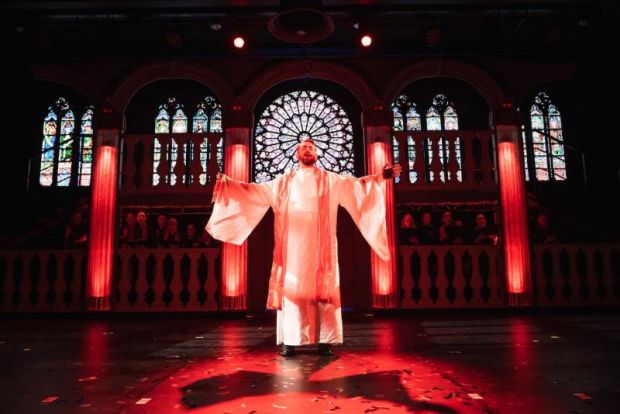
Once we were ready to start blocking, it was exceptionally challenging to work simultaneously with the number of bodies on stage, allowing everyone their moment.
“Cierwen came up with such a straightforward medium of using pegs with the cast’s photos on a small table, and we blocked them into position to give us our bearings,” says Luke.
We would call each other at the start and end of each rehearsal, briefing and debriefing each scene until we found our groove once we started knuckling down with the cast about their role in the show.
Act 1 was problematic, as sustaining the audience’s investment for such a prolonged duration was hard. Four of the six big numbers are in this act, including the 12-minute intro, ‘Bells of Notre Dame’, the penultimate ‘Out There’, the spellbinding ‘God Help the Outcasts’, and the best villain song of all time, ‘Hellfire’. Between these big numbers, we initially struggled with ‘Top of the World’ and ‘Tavern Song’. Something wasn’t clicking. ‘Top of the World’ is essential in showing how kindness can change a person’s outlook on life.
“We re-blocked this scene three times, and it ended up being my favourite scene in the entire show by the end,” says Luke.
‘Tavern Song’ features the most prominent dance number in the show, showing the Romani people’s experience. Even though they were suppressed and “outcasts”, they are portrayed with a positive outlook on life, in all their adversity, and gave so much love and laughter to their scenes. We initially struggled to convey this.
The stagecraft was intense, needing to convey heights with cast placement while working with levels of stairs, with a sense of depth in Notre Dame and travelling through Paris.
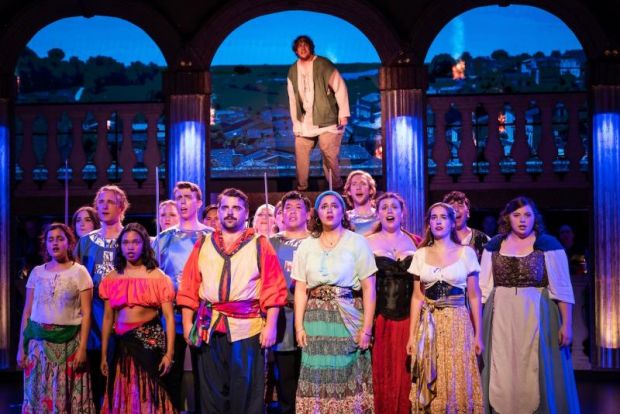
The stage directions call for a fire across Paris, with Quasimodo swinging down from Notre Dame to rescue Esmeralda in one fell swoop off a burning pyre. We achieved this through the congregants narrating the lines directly whilst Quasimodo was off-stage. When music reached a climax, he fended off the cathedral guard to rescue Esmeralda in a well-timed, choregraphed fight scene.
For the fire in Paris, we used custom made hand props of LED fire torches in combination with projections on screens masked by the façade of Notre Dame. Scenes visited earlier were now charred, smouldering or even still on fire.
Intimacy and trust between the cast is a must, with love versus lust being a core theme. ‘Tavern Song’ has many intimate moments, with a passionate kiss between Esmeralda and Phoebus, which lasts for nearly half a minute, very awkward to block at first blush.
Multiple battle scenes take place and demand even more trust between the cast and crew, with swords sometimes wandering off from the props table because of how fun it was (a good stage manager is screaming at the thought of this).
There is also the very confronting scene titled ‘The Assault’. The moment where Frollo attempts to sexually assault Esmeralda in his lustful rage. Both actors, Joshua Rogers and Dylan-Hayley Rosenthal, were incredible to work with, and trust was no issue. This scene solidifies the show's stakes - Frollo is the monster.
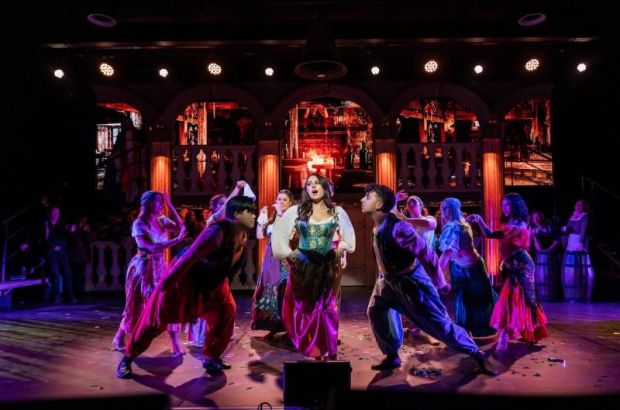
We planned on much revision, but we only managed to get three nights of it due to the amount of material to learn. It was glorious once we began running the show in its acts roughly three weeks from opening, watching the cast stop thinking, be in the moment, and enjoy.
Sitzprobe came, and we were crying at how compelling the score and music were to hear live. There were collective ‘Oh My’ moments amongst the cast and crew during Matt Herne’s (Quasimodo’s) incredibly powerful numbers.
Once we got to the bump in, hell broke loose (as it always does) with the intricate technical designs and challenges. Construction of the set and technical elements presented many challenges when first installed.
Redesigning the location on the go to adjust to what wasn’t right while re-blocking to adjust, plotting lighting and sound, and getting the cast used to the space felt like it had control of us, and we were at its mercy.
We would be on two hours of sleep, arrive at the theatre at 9 am and go home at 11 pm each day until managing to wrangle control back control two nights before we opened with such a sense of relief that the show was ready and everything everyone had created was so worth it.

